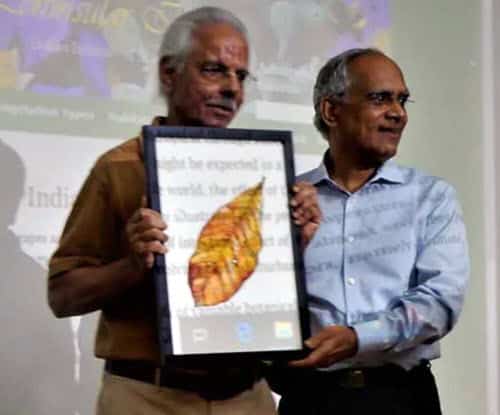--Must See--
-editor="d5v5j" data-offset-key="95fs5-0-0">
IISC Bengaluru Launches Online Database Of Plants In Peninsular India
Now the Nature enthusiasts will have free access to peer-reviewed info on over 10,000 species of plants from peninsular India and this has been made possible by Indian Institute of Science (IISc)‘s Center for Ecological Sciences (CES) by developing a site named Digital Flora of Peninsular India. On March 2, 2019, the website was launched by Lakshmi Narayanan, former CEO and VC of Cognizant Technologies and Kameswara Rao retired chair of the Department of Sericulture and Botany, Bangalore University. The duo has been instrumental in promoting this initiative: Mr. Narayanan made a personal contribution to this cause and the database committee was chaired by Kameswara Rao.
Addressing the gathering Principal Scientific Advisor to the Government of India, K VijayRaghavan congratulated Mr. Rao and his staff. In order to reach a wider audience, He suggested that they will soon bring out the site in Kannada. In response, the Chair of CES, Rohini Balakrishnan, assured him that bringing the site in several languages out was on the cards.
The Website Digital Flora of Peninsular India has the information available in the herbarium which is a collection of dried pressed plant specimens and their associated data housed in CES.

IISc stated that The herbarium was founded by a Botanist named CJ Saldanha, who collected these specimens from his explorations of the flora of Karnataka. according to K Sankara Rao, who was the herbarium in-charge and retired professor of the Department of Biochemistry, the institute acquired the herbarium after Mr. Saldanha’s retirement,
When Mr. Rao took control in 2007, by developing an online database that would contain information about each plant species: its vernacular name, taxonomic description, habitat distribution, flowering time, conservation status and much more, he decided to reinvent the herbarium. To accomplish this he brought a group of volunteers together who digitized and compiled records of plant specimens, and programmers, who created the database.
But Rao faced a problem, He stated that as the collections are over 30 years old, there could be a sea of change in species diversity in a habitat.
So his team completed extensive ecological surveys to ensure the information is accurate and up-to-date. The website features images of the herbarium specimens in addition to photographs taken in the field trips of the team.
In the early years, Mr. Rao’s team concentrated only on digitizing Karnataka’s flora. But the exercise slowly expanded to include other nations by which the Western Ghats runs, and the Eastern Ghats. The group spent four years to collect, process and upload the information on the website.
Mr. Rao later stated that the availability of the database is a crucial first step in addressing issues related to the conservation of both plant species as well as habitats.






























